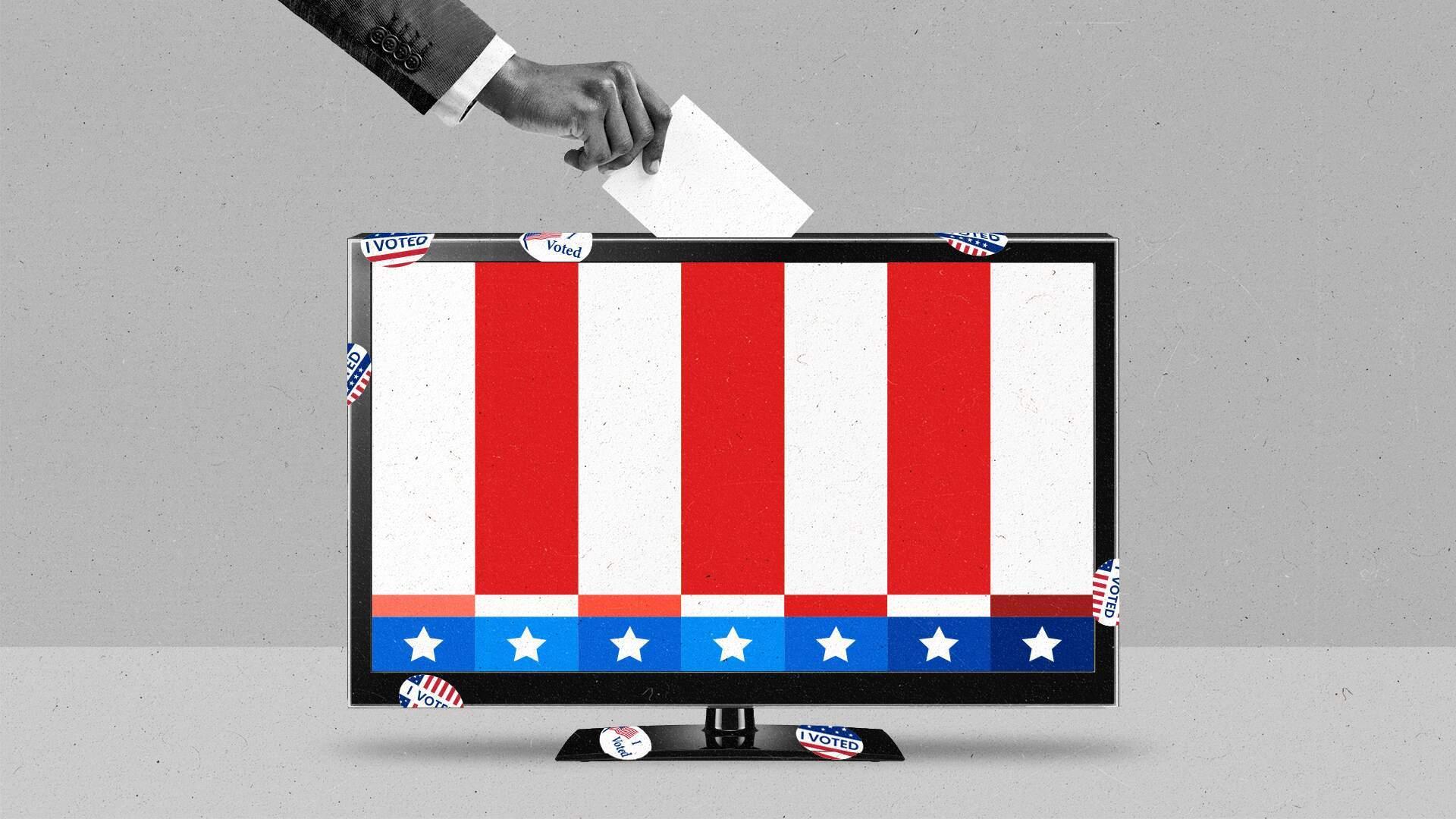How a surge in targeted political ads during the midterms impacted battleground states

Illustration by Dave Cole / Getty / The Current
Each election cycle creates new storylines about the whys and wherefores of voting behavior. This year’s U.S. midterm elections were no exception. There were thrills, spills, and surprises, as the anticipated Republican red wave failed to happen.
One storyline that did emerge was the surge in tactical digital advertising by political campaigns in key battleground states. Political ad spend for the 2022 election cycle approached a record $9 billion, according to projections from the nonpartisan ad-tracking firm AdImpact. Of this staggering spend, analysts estimated that around 25 percent was allocated to digital advertising, which includes connected TV (CTV).
“We placed all of our emphasis on digital advertising,” says Eliana Locke, the national press secretary at Priorities USA, the largest Democratic super PAC. It announced at the beginning of the cycle that it would commit its entire $30 million ad spend budget on digital. On the other side of the aisle, the Senate Leadership Fund (SLF) — the leading super PAC for Senate Republicans — flooded millions of dollars into key Senate contests. (The SLF didn’t respond to our request for comment).
“We conducted a study after the 2020 election that showed digital advertising was just much more efficient at reaching voters, especially the voters we are trying to target, who are disproportionately young, disproportionately voters of color,” Locke tells The Current. “We found that young people are just spending vastly more time online watching streaming TV than they are watching traditional TV. So just communicating with them is much more efficient if we do it online.”
A new study conducted by The Trade Desk and Morning Consult across eight battleground states bears out the importance of digital advertising when it comes to political ads. It revealed insights into how surveyed voters perceived political ads in the four weeks leading up to the election, noting that streamers skew younger and are more diverse, but were less certain of their voting plans a few weeks out from Election Day. But the study also found that as Election Day approached, heavy streamers’ intentions to vote showed a marked 6 percent swing from “unsure” to “more likely to vote,” especially compared to linear TV-viewing voters.
The Trade Desk and Morning Consult study found that 50 percent of potential voters subscribe to at least one streaming service with ads, such as Hulu, where political ads might run. Furthermore, 26 percent of Americans said they see political ads while streaming at least a few times a week. While this isn’t as high a percentage as those who say they’re exposed to political ads on broadcast/cable, there’s some indication that streaming ads are hitting the sweet spot for the younger demographic: 15 percent of Gen Z voters say they’d best describe political ads on streaming as persuasive, whereas 40 percent say cable ads could be described as “annoying.”
The findings also suggest that Democrats in the battleground states likely managed to connect with potential voters thanks to targeted streaming ads. During one week in October, for instance, 42 percent of Black voters who were surveyed reported seeing ads from Democrats while streaming, with only 33 percent surveyed saying they saw streaming ads from Republicans. During that same period, 38 percent of Georgians saw political ads for Democrats while streaming, while only 21 percent saw ads from Republicans, according to the survey.
Even as the political parties take stock of what just happened during the midterms, there’s still one more race yet to be decided — Georgia’s December 6 runoff for the Senate seat between Democratic incumbent Raphael Warnock and Republican challenger Herschel Walker after neither won a majority of votes. In a sprint to the finish line, the campaigns are already pouring millions of additional ad spend into the contest.
To be sure, it’s already an expensive race. The CEO of AdImpact, Kyle Roberts, tells The Current that more than $315 million have been spent by both parties over the course of the cycle. Roberts says that the Democrats have already outspent the Republicans by approximately $30 million in this race. “When you have all these extra ad dollars, it means you can run a lot more messages and you can be a lot more creative with your media mix,” he says.
For the Democratic super PAC Priorities USA, the all-in commitment to digital media enabled them to present “a really diverse array of messages,” says Locke. She explains that because of digital spending, the Democrats were able to tap in to grassroots efforts more effectively, while coordinating independent expenditure to make sure all potential voters in every market were reached. She says that made all the difference. “We were able to connect with these local issues a lot better and really respond to what voters were concerned about.”